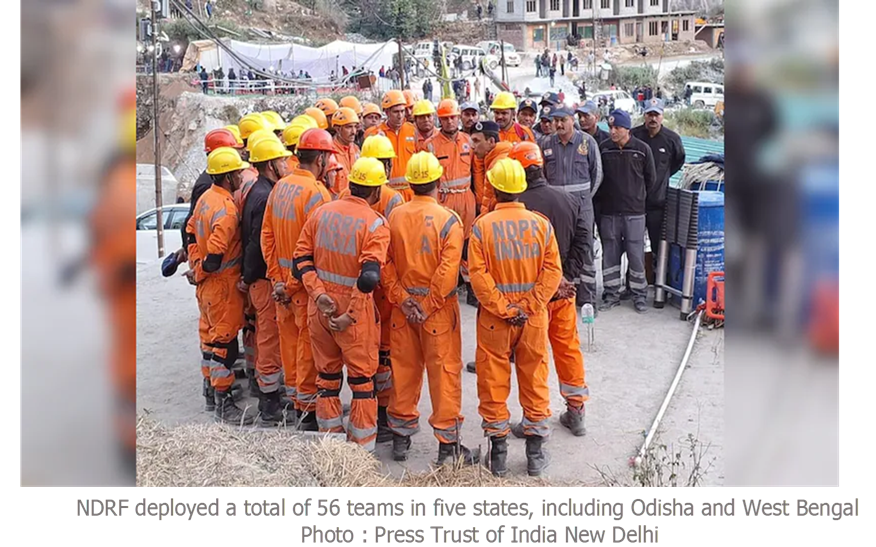
Cyclone Dana roared onto the scene with little warning, unleashing fierce winds and relentless rain across the region. The powerful system rapidly intensified, catching the attention of meteorologists and residents alike. Now, as calm returns, communities begin the long road to recovery and reflection on the storm’s swift and severe strike.
_________________________________________________________________________________________________________________________________________
Fury from the Bay of Bengal

The Bay of Bengal, India’s northeastern part of the Indian Ocean has a proven ill-repute of generating devastating tropical cyclones owing to its geographical siting resulting which creates devastating combinations of higher ocean temperatures, abnormal atmospheric conditions and climate patterns. Due to this, adjacent states of Odisha, West Bengal, Andhra Pradesh, and Tamil Nadu are vulnerable to disastrous cyclones. Cyclone Dana of October 2024 was one such powerful and intense cyclonic storm, which struck the eastern coastline of India and left its imprint as on Odisha and the state of West Bengal.
Among the 2024 North Indian Ocean cyclones, Dana was special in both terms, strength of the system and the level of preparedness and response it elicited. Qatar named it “Dana,” which means generosity in Arabic—an appropriate and ironical moniker for a system that tested the mettle, unity, and resilience of the impacted communities.
Cyclone Dana’s Trail

As reported by Indian Meteorological Department (IMD) genesis of Cyclone Dana began in a low-pressure system on October 20, 2024. Favorable weather conditions including warm sea surface temperatures, low vertical wind shearing, and strong convection in the western side of the storm fed it.
It transformed into a severe cyclonic storm on 24th October unleashing 100–110 km/hr winds, which culminated in a 120 km/hr blast. The landfall and its turmoil lasted for 9 hours during midnight of 24th till morning of 25th October, the day of extensive devastation engulfing north coastal Odisha touching 4.1 million people in 11,637 villages. The rains in Cyclone Dana inundated large tracts of Odisha and West Bengal. Up to 21 centimeters of rainfall in certain regions added to waterlogging and the potential that flash flooding may occur. This added to the waterlogging caused by the rains of the previous rainy days.
The Aftermath
The cyclone claimed seven lives, injured twelve, and rendered four missing. Total economic loss is estimated to be ₹616.19 crore. Major infrastructure of the Energy Department was damaged, causing prolonged cuts in electricity supply.
Public infrastructure suffered the biggest blow, to the tune of ₹512.26 crore, followed by agriculture and housing, each losing ₹82.92 crore and ₹21.32 crore, respectively. Major districts of Balasore, Bhadrak, and Kendrapara were the hardest hit.
Bringing life to normal - Relief and Rehabilitation

The Odisha state government was swift in reacting, releasing ₹423 crore for rehabilitation and relief.
In response to Cyclone Dana, extensive relief efforts were set in motion by the Government of Odisha jointly with the National Disaster Response Force (NDRF) and Odisha Disaster Rapid Action Force (ODRAF).
NDRF and ODRAF dispatched over fifty (50) teams of rescuers to conduct search and rescue efforts, remove obstructions and restore communications links.
IMD was efficient in forecasting the cyclone route and intensities and promptly released alerts and updates which aided in early evacuation from vulnerable locations. Although there was extensive destruction, early evacuation kept the loss of life to a bare minimum.


Rapid repair of infrastructure was undertaken by the Public Works Department (PWD). Coordination of the Central Government and Ministry of Home Affairs ensured that mobilization of resources was in a well-timed manner, enabling steady recovery.
Most impressive was the evacuation of over 500,000 people from high-risk coastal regions, a reflection of the strength of India’s early warnings and disaster management procedures.
Being Reminded of Disaster Preparedness
As the climate continues to change and extreme weather events become more common, it is imperative to treat each disaster as both a warning and lessons learnt. By studying the complete event of Cyclone Dana, the predictions, the responses, loss of life and property and shortcomings revealed by the storm, India—and other vulnerable nations— can building on their emergency preparedness and resilience and can move toward a safer and more change adaptive future.
References:
- https://mausam.imd.gov.in/
- https://indianredcross.org/
- https://internal.imd.gov.in/press_release/20241107_pr_3389.pdf
- https://reliefweb.int/report/india/india-tropical-cyclone-dana-update-gdacs-ndmindia-imd-media-echo-daily-flash-28-october-2024
- https://currentaffairs.khanglobalstudies.com/cyclone-dana/
- https://www.business-standard.com/india-news/ndrf-deploys-56-teams-across-five-states-in-view-of-cyclone-dana-124102301209_1.html
The writer’s perspective

Cyclone Dana wasn’t just a storm—it was a revelation. In tracing its path and impact, I’ve explored not just the science, but the stories it left behind.
I’m Sahil Shah, B. Tech IT student of at Narsee Monjee Institute of Management Studies, and this is my take on a cyclone that tested everything we thought we were prepared for.


